Aston Martin DBS Superleggera Convertible VS Toyota Prius
Aston Martin DBS Superleggera Convertible
The Aston Martin DBS Superleggera Cabrio epitomises the perfect blend of luxurious elegance and high-performance engineering. With its sleek and aerodynamic design, this convertible offers an exhilarating open-top driving experience that is both powerful and refined. The meticulously crafted interior combines premium materials with advanced technology, providing both driver and passengers with an atmosphere of sophistication and comfort.
more informationToyota Prius
The Toyota Prius stands as a pioneer in the realm of hybrid vehicles, offering an eco-friendly driving alternative with its innovative technology. Its aerodynamic design and comfortable interior make it a practical choice for those looking to reduce their carbon footprint without sacrificing style. Additionally, the Prius boasts a reputation for reliability and efficiency, contributing to its lasting popularity among environmentally conscious drivers.
more information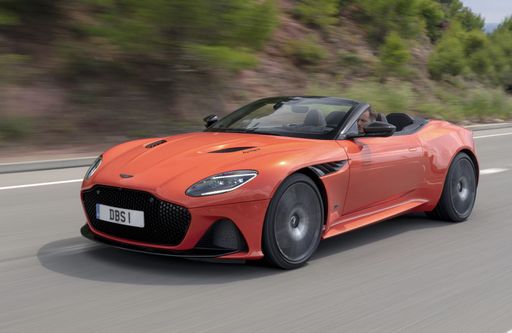 @ media.astonmartin.com
@ media.astonmartin.com
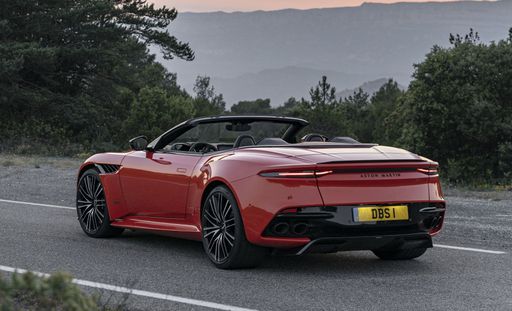 @ media.astonmartin.com
@ media.astonmartin.com
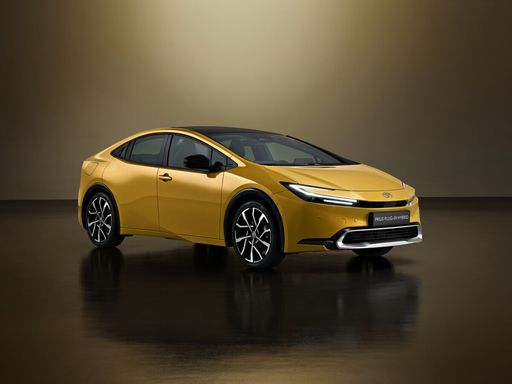 @ Toyota
@ Toyota
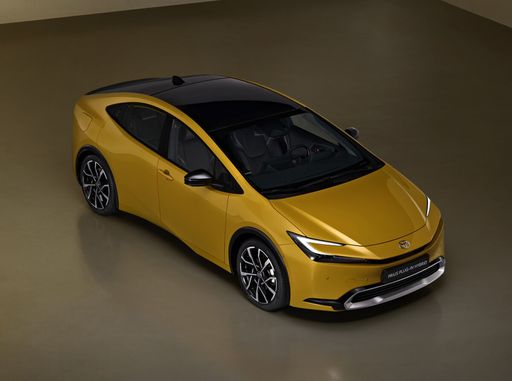 @ Toyota
@ Toyota
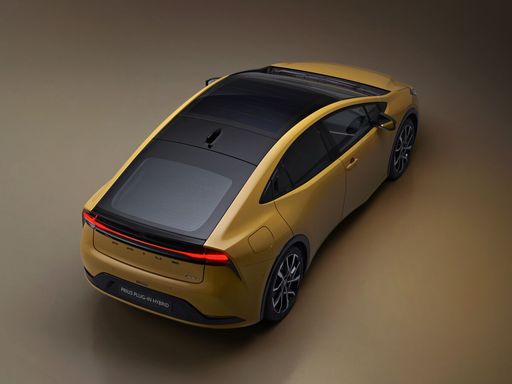 @ Toyota
@ Toyota
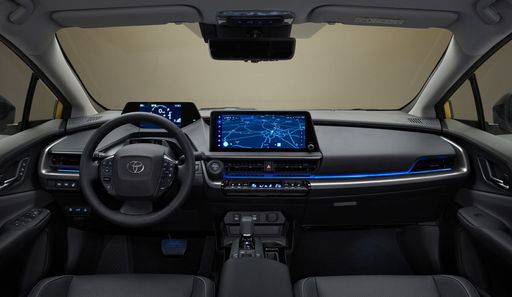 @ Toyota
@ Toyota
Costs and Consumption |
|
|---|---|
|
Price
about 328300
£
|
Price
about 39400 - 45800
£
|
|
Consumption L/100km
13.5
L
|
Consumption L/100km
0.5 - 0.7
L
|
|
Consumption kWh/100km
-
|
Consumption kWh/100km
-
|
|
Electric Range
-
|
Electric Range
72 - 86
km
|
|
Battery Capacity
-
|
Battery Capacity
-
|
|
co2
314
g/km
|
co2
12 - 17
g/km
|
|
Fuel tank capacity
75
L
|
Fuel tank capacity
40
L
|
Dimensions and Body |
|
|
Body Type
Convertible
|
Body Type
Hatchback
|
|
Seats
4
|
Seats
5
|
|
Doors
2
|
Doors
5
|
|
Curb weight
1945
kg
|
Curb weight
1620 - 1630
kg
|
|
Trunk capacity
260
L
|
Trunk capacity
284
L
|
|
Length
4715
mm
|
Length
4599
mm
|
|
Width
1970
mm
|
Width
1782
mm
|
|
Height
1295
mm
|
Height
1470
mm
|
|
Payload
420
kg
|
Payload
365 - 375
kg
|
Engine and Performance |
|
|
Engine Type
Petrol
|
Engine Type
Plugin Hybrid
|
|
Transmission
Automatic
|
Transmission
Automatic
|
|
Transmission Detail
Automatic Gearbox
|
Transmission Detail
CVT
|
|
Drive Type
Rear-Wheel Drive
|
Drive Type
Front-Wheel Drive
|
|
Power HP
770
HP
|
Power HP
223
HP
|
|
Acceleration 0-100km/h
3.6
s
|
Acceleration 0-100km/h
6.8
s
|
|
Max Speed
340
km/h
|
Max Speed
177
km/h
|
|
Torque
900
Nm
|
Torque
-
|
|
Number of Cylinders
12
|
Number of Cylinders
4
|
|
Power kW
566
kW
|
Power kW
164
kW
|
|
Engine capacity
5204
cm3
|
Engine capacity
1998
cm3
|
|
Top speed
340
km/h
|
Top speed
177
km/h
|
General |
|
|
Model Year
2023
|
Model Year
2023
|
|
CO2 Efficiency Class
G
|
CO2 Efficiency Class
B
|
|
Brand
Aston Martin
|
Brand
Toyota
|
Aston Martin DBS Superleggera Convertible
Unveiling the Majesty: Aston Martin DBS Superleggera Volante
In the world of luxury sports cars, few names evoke the same level of reverence and excitement as Aston Martin. The DBS Superleggera Volante, a convertible that seamlessly blends performance, style, and innovation, exemplifies the pinnacle of British engineering. This overview explores the technical brilliance and cutting-edge innovations that define the DBS Superleggera Volante, an embodiment of elegance and power on four wheels.
Engineering Mastery: Powertrain and Performance
At the heart of the Aston Martin DBS Superleggera Volante lies a monstrous 5.2-litre V12 engine, delivering a breathtaking 770 PS and 900 Nm of torque. This engineering marvel allows the Volante to accelerate from 0 to 100 km/h in just 3.6 seconds, reaching a top speed of 340 km/h. Such raw power is managed by an advanced automatic transmission, ensuring a smooth yet exhilarating drive, making every journey an unforgettable experience.
Exquisite Craftsmanship and Design
The Aston Martin DBS Superleggera Volante is more than just a performance vehicle; it's a work of art. The sleek silhouette of this convertible is accentuated by its carbon-fibre body panels, which help reduce weight and increase agility. Measuring 4715 mm in length, 1970 mm in width, and 1295 mm in height, the Volante's imposing presence is matched by its aerodynamic efficiency. The luxurious interior, featuring hand-stitched leather seats and state-of-the-art infotainment, ensures that style is uncompromised by performance.
Innovation and Technology
Innovation is at the core of Aston Martin's ethos, and the DBS Superleggera Volante is no exception. The vehicle’s adaptive damping system provides a customisable driving experience, allowing the driver to select settings which best suit their driving style. Despite its formidable power output, the Volante achieves a fuel consumption rate of 13.5 L/100km and emits 314 g/km of CO2, placing it in the CO2-efficiency category G. The convertible also offers an exhilarating open-air experience at the touch of a button, with the fabric roof seamlessly retracting in seconds.
The Total Package: Features and Practicality
While the Aston Martin DBS Superleggera Volante promises pure driving pleasure, it does not skimp on practicality. The vehicle comfortably seats four passengers and offers a respectable 260 litres of boot space, accommodating both luxurious getaways and everyday travel needs. Its fuel tank capacity of 75 litres ensures fewer stops on long journeys, while the car's impeccable balance and lightweight structure guarantee a dynamic driving experience.
An Iconic Masterpiece
The Aston Martin DBS Superleggera Volante stands as a testament to the brand's commitment to craftsmanship, innovation and performance. With a price tag of €383,000, it remains an exclusive offering for those who value sophistication and engineering excellence. In every aspect, from its roaring V12 engine to its meticulously crafted interior, the Volante proves itself as a masterpiece designed for the most discerning of drivers.
Toyota Prius
The All-New Toyota Prius: Revolutionising Efficiency and Performance
The Toyota Prius, a name synonymous with hybrid innovation, has once again shown why it remains at the forefront of eco-friendly automotive technology. The latest models have enhanced technical features and innovations, setting new standards for efficiency and driving experience.
Hybrid Performance: A Leap Forward
The latest Prius models employ a sophisticated 2.0 litre Plug-in Hybrid system that flawlessly melds petrol and electric power. With a power output of 223 PS, it propels the Prius with impressive dynamism, reaching 0-100 km/h in just 6.8 seconds. This performance-oriented aspect of the Prius does not compromise on efficiency, with an astonishing fuel consumption ranging from 0.5 to 0.7 L/100km.
Electric Range and Efficiency
One of the key highlights of the new Prius is its substantial electric-only range. Depending on the variant, it can travel between 72 to 86 km on electric power alone, making it an ideal choice for urban commutes where zero emissions are preferred. The hybrid system's CO2 emissions are remarkably low, between 12 and 17 g/km, contributing to its CO2 Efficiency Class B rating.
Engineering Excellence with CVT
The Prius is equipped with a state-of-the-art Continuously Variable Transmission (CVT), ensuring a smooth and efficient drive. This advanced transmission supports the front-wheel-drive layout, delivering power seamlessly and enhancing driving pleasure without sacrificing fuel economy.
Stylish Design and Comfort
Designed as a sleek five-door hatchback, the Prius offers a comfortable and spacious interior with seating for five passengers. It measures 4599 mm in length, 1782 mm in width, and 1470 mm in height, offering a practical balance of size and comfort. The boot space, while tailored for the hybrid battery, still provides a decent 284 litres of storage.
Cost Efficiency
The running costs of the Prius are competitive, with monthly expenses estimated between €1064 and €1188, and cost per kilometre ranging from 42.6 to 47.5 cents. Its efficient design results in a maximum speed of 177 km/h and a practical fuel tank size of 40 litres, ensuring less frequent stops on longer journeys.
Conclusion: The Prius Legacy Continues
The Toyota Prius continues to lead by example in the realm of hybrid technology. Combining impressive power with unmatched efficiency and a sophisticated driving experience, it is clear that the Prius remains a compelling choice for the environmentally conscious driver. Its innovative features and favourable cost metrics only bolster its appeal in the modern automotive landscape.
